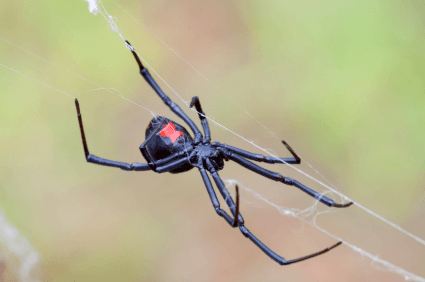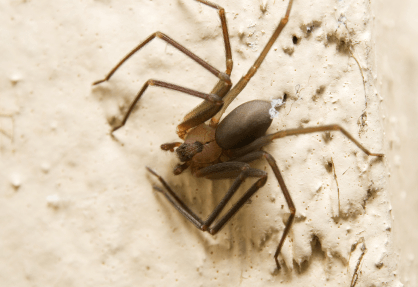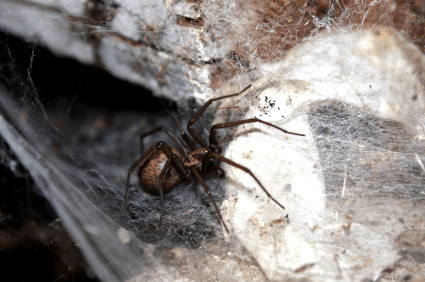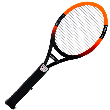Identifying Poisonous Spiders
Written by Lee Wyatt (last updated August 5, 2013)
Identifying poisonous spiders can be both exciting, and just a tad disturbing. That being said, it is a good idea to learn some of the basics of being able to identify those spiders that could harm you. There is a very simple rule to being able to identify poisonous spiders, and that is to know your area. Besides that, as long as you know the top three spiders in the United States, then you will greatly reduce the chances of getting bit accidentally.
- Know your area. The main thing about identifying poisonous spiders is to learn your area. Not all spiders can live in all areas, and that includes poisonous spiders as well. Some areas are simply too cold for the more poisonous spiders to live very easily, which means that you won't have to worry about most of them too much. For example, if you don't live in the Midwestern or Southern regions of the United States, you really don't need to worry about the Brown recluse all that much. However, considering that the Black widow can live just about anywhere in the United States it is a very good idea to know how to identify it.
- Black Widow spiders (Latrodectus hesperus). Arguably the most famous of all poisonous spiders, and easily the most identifiable, the female Black Widow spider is also fairly pretty. It will have a shiny black skin that has either a red hourglass or a single red dot on the abdomen. The males of the species are a little less noticeable and significantly less venomous than their female companions. In addition, the males are also a lot shyer and therefore less aggressive than the females. This makes them much easier to avoid. The males are usually thin and a mottled grey or brown color. Unfortunately, this spider can be found anywhere in the United States or Canada that has a sufficient heat source and a decent food supply. (See Figure 1.)

Figure 1. A Black Widow spider.
- Brown Recluse spider (Locosceles reclusa). Next to the Black Widow, the Brown Recluse spider is the single most feared spider in the United States. Despite what the old wives tale says about Brown Recluses, not all of them are violin shaped, though there is a way that you can tell these spiders from all others. Brown Recluses have only six eyes, while all other spider types have eight. You will be required to actually catch one in order to do this though, so be careful. Another tell tale sign that you may be dealing with a Brown Recluse is that the abdomen has absolutely no markings, and the legs have very fine hairs. These spiders rarely go any more north than Nebraska, and will usually stay in the Midwestern and Southern regions of the United States. (See Figure 2.)

Figure 2. A Brown Recluse spider.
- Hobo spider (Tegenaria agrestis). Also known as the Northwestern Brown spider, these spiders are commonly misidentified as Brown Recluses, and thus help contribute to the fame that their cousins get. The biggest difference between the two species is that the Hobo spider has brown stripes on its legs, while the Recluse does not. In addition, the abdomen usually has a herringbone pattern on it, and hairier legs than the Recluse. This spider is more commonly found in the Northwestern United States and Western Canada. (See Figure 3.)

Figure 3. A Hobo spider.
Author Bio
Lee Wyatt
Contributor of numerous Tips.Net articles, Lee Wyatt is quickly becoming a regular "Jack of all trades." He is currently an independent contractor specializing in writing and editing. Contact him today for all of your writing and editing needs! Click here to contact. Learn more about Lee...
Moving Boxes
If you have ever moved, or are thinking of moving, then you know just how stressful an experience it can be. Why add ...
Discover More
Removing Shingles
Every so often, the roof of our homes will need a little care and maintenance. One of the most common ways that we have ...
Discover More
Cleaning Discolored Linoleum
Whether through age or through excessive changes in heat over time linoleum will become discolored and start to look ...
Discover More
Kill Snails and Slugs with Beer
If you're having problems with snails and slug eating away your vegetable garden, destroying your flower beds, or ...
Discover More
What is the Japanese Lady Beetle
Japanese lady beetles are sometimes known as the Halloween lady beetle because of their propensity to congregate in large ...
Discover More
Preventing Household Bugs
While it might be nice to learn methods you can use to remove bugs from your home, wouldn't it be better to learn how to ...
Discover More




Comments